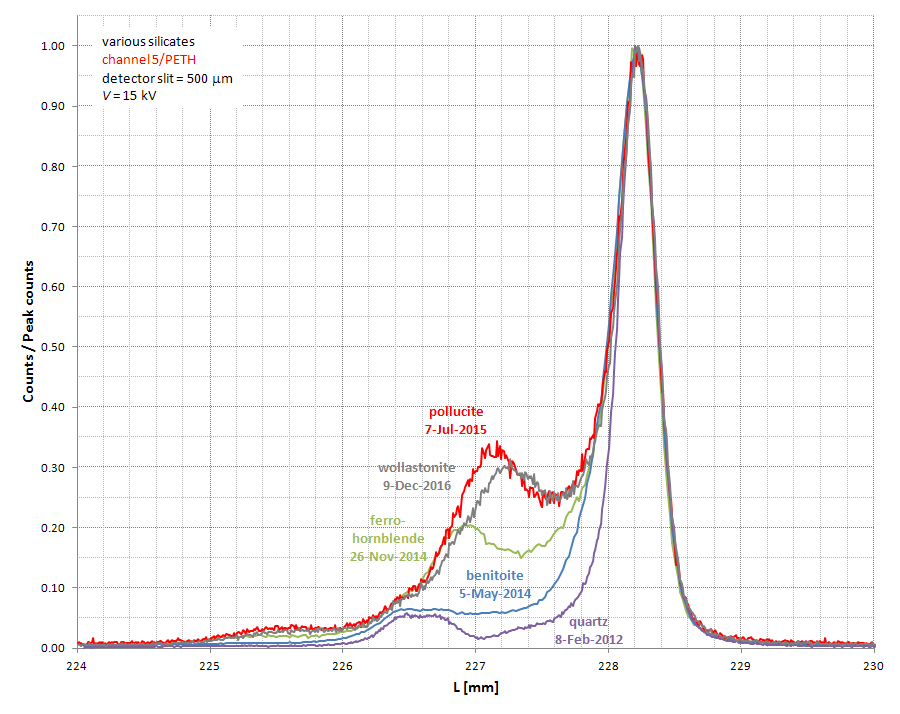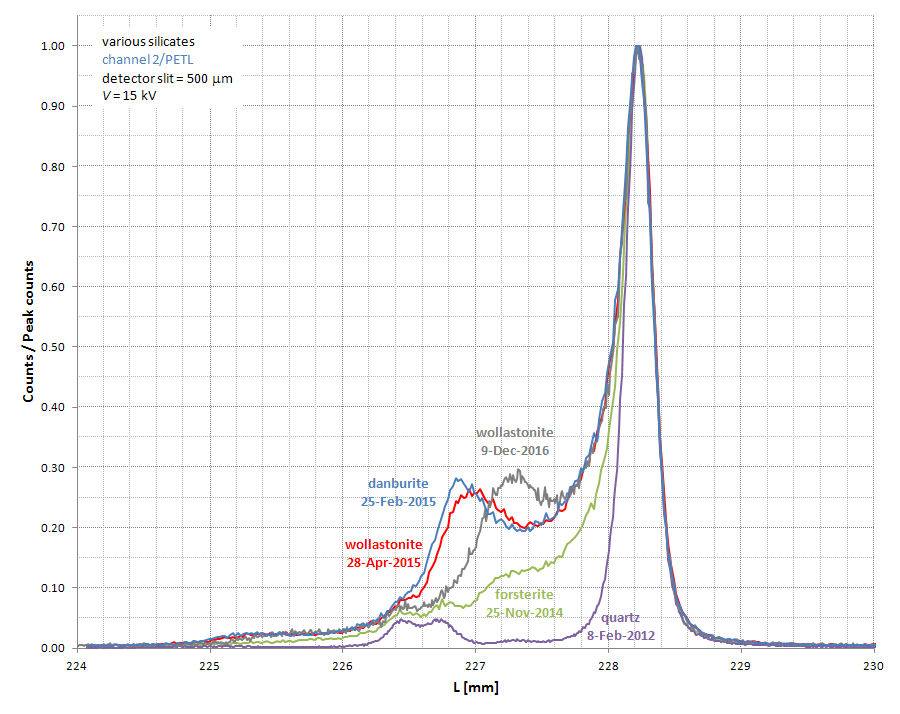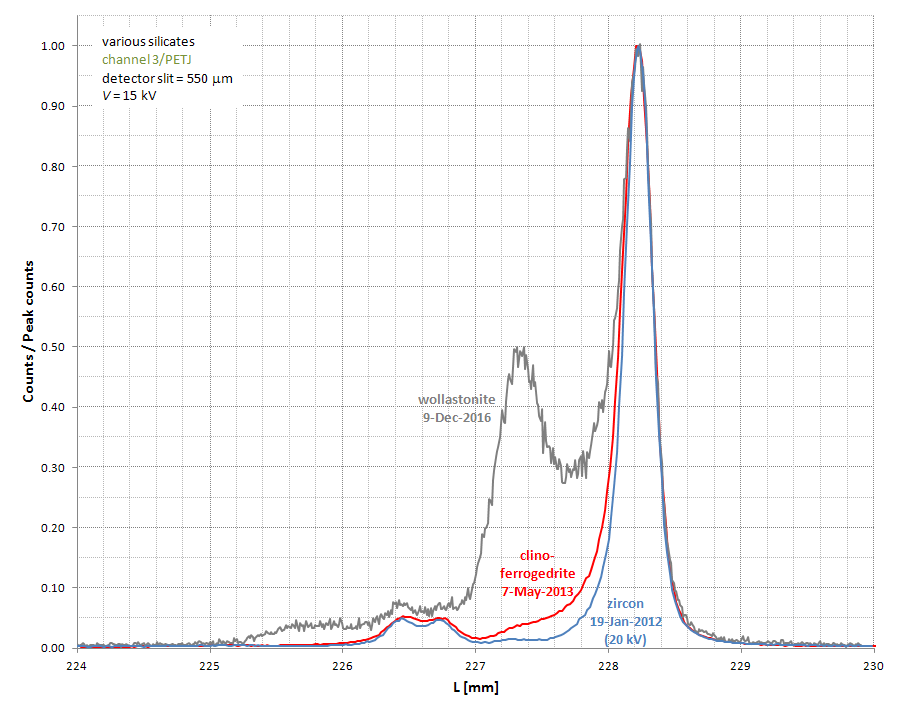Fascinating! I guess that would fit more to plastic deformation (not sure I quite understand what this means in this context though. Relaxation?) rather than catastrophic cracking. Did the peak counts change over time?
I would contact JEOL about this and see what they say.
Also, where did you get the pollucite from? Do you use it as a standard?
Certainly fascinating, but also deeply disturbing.
Yes, all else being constant, count rate at the Si Ka peak position has decreased for each of the crystals, as more counts are now distributed across a broader range of Bragg angles. Below are plots for each of the three PET crystals showing variation in appearance of Si Ka and its satellites over time (noting that I usually scan across high Bragg angles using PETH and PETL since they produce greater count rates than PETJ, hence the lack of data for the last one).
I measure Ca Ka peak position and count rate (on wollastonite) generally every few days using each of the three PET crystals. Had any of the crystals cracked over the interval of time covered by the plots below, I would have expected to see an abrupt drop in count rate and shift in peak position. I’ve only seen such behavior on two occasions due to shift in position of a baseplate.
Regarding the possible effects of temperature changes and noting the relatively large coefficient of thermal expansion of PET, I keep a continuous record of temperature and humidity in the lab using a Lascar EL-USB-RT real-time data logger. Note that the most dramatic changes in Si Ka peak shape on PETL occurred during the period late November, 2014 through late February, 2015. During the cooler months, lab temperature is the most stable and generally oscillates between about 19 and 21.5 C (thermostat is set at 21 C). The highest temperature I've seen in the lab is 23.8 C in July, 2013 during an A/C malfunction (refrigerant leak).
I obtained the pollucite from the Royal Ontario Museum; it’s from Hebron, Maine. I use it as a standard because it’s the only material I have that contains a large quantity of Cs. However, I regard is as being relatively poorly characterized (see my post
here). This is why I’ve been so interested in getting a good Cs standard such as Cs2Zr(PO4)2 from Marc Schrier.
Si Ka scans over time using PETH (channel 5):

Si Ka scans over time using PETL (channel 2):

Si Ka scans over time using PETJ (channel 3):
